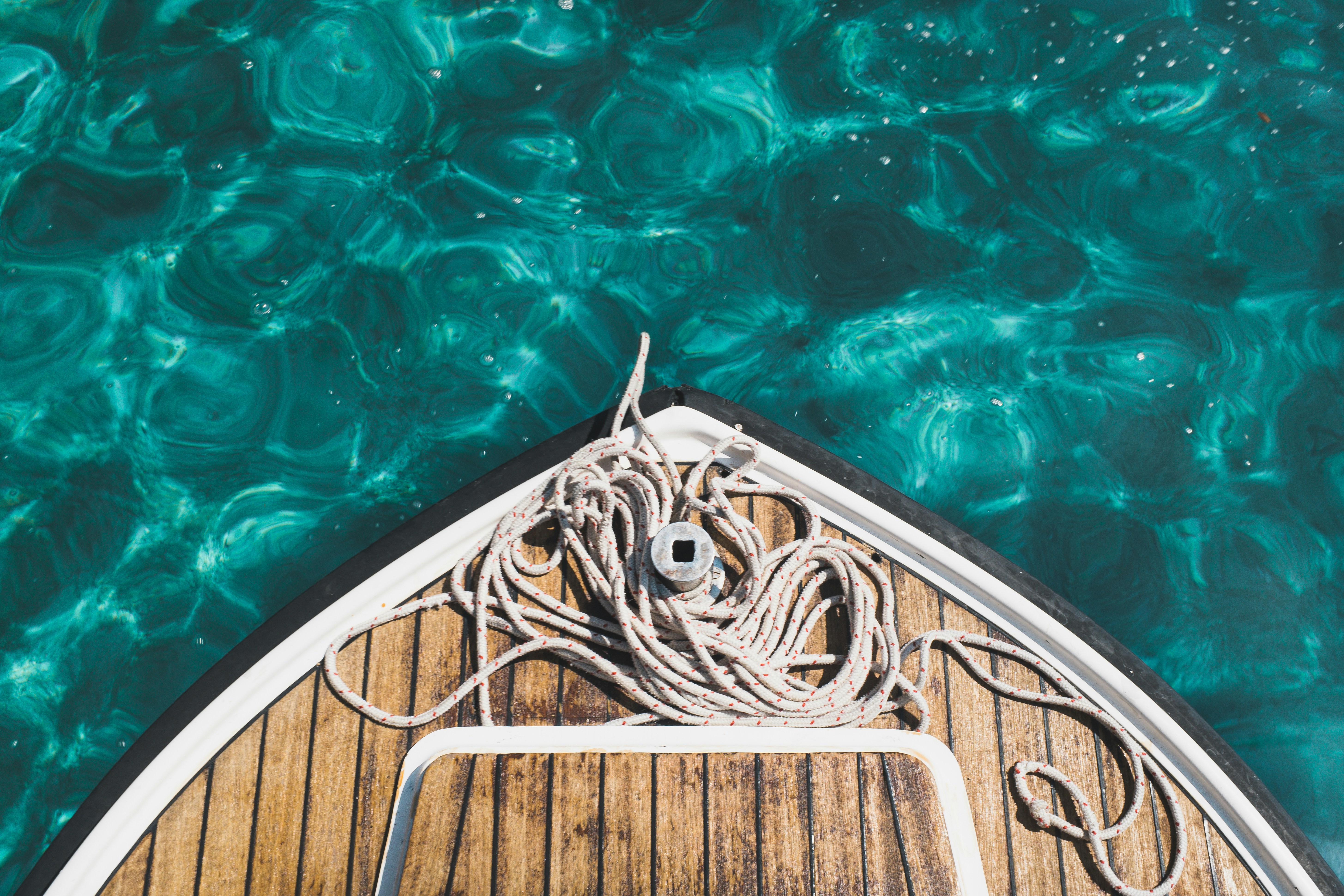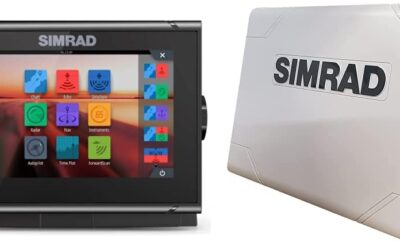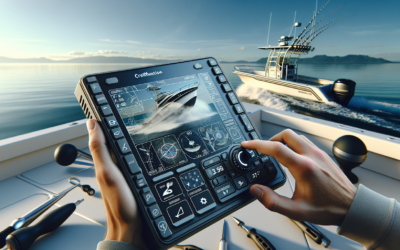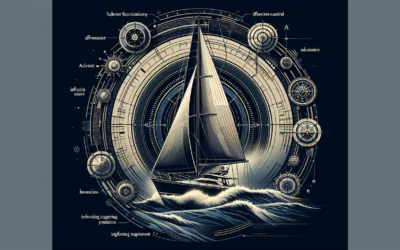Whether you’re a seasoned angler or just starting out, one thing is certain: a fish finder is a must-have tool for any fishing expedition. With its advanced technology and intuitive design, “The Nautical Necessity: Why Every Angler Needs A Fish Finder” is revolutionizing the way we fish. Say goodbye to endless hours of aimless casting and hello to effortlessly locating the best fishing spots. In this article, we’ll explore the countless benefits of this essential device and why it should be a staple in every angler’s arsenal.
Benefits of using a fish finder
1.1 Allows for precise depth measurement
One of the main benefits of using a fish finder is its ability to provide precise depth measurements. When you’re out on the water, knowing the depth of the water you’re fishing in can make a huge difference in your fishing success. With a fish finder, you can easily determine the depth of the water and adjust your fishing technique accordingly. This is particularly helpful when fishing for certain species that prefer specific depth ranges.
1.2 Identifies underwater structures and vegetation
Another advantage of using a fish finder is its ability to identify underwater structures and vegetation. Fish tend to congregate around structures such as rocks, fallen trees, and submerged vegetation. By using a fish finder, you can accurately locate these structures and target your fishing efforts in the right areas. This not only increases your chances of finding fish but also helps you avoid wasting time in unproductive spots.
1.3 Locates schools of fish
Locating schools of fish can be a game-changer for any angler. Fish finders are invaluable in this regard as they can identify and track schools of fish. This feature allows you to quickly find hotspots where fish are actively feeding, increasing your chances of landing a catch. By following the movements of the fish on the fish finder’s display, you can strategically position yourself and improve your fishing success.
1.4 Tracks fish movement
Tracking fish movement is crucial for understanding their behavior and improving your chances of success. Fish finders with advanced features can track the movement and behavior of fish in real-time. This not only allows you to target specific fish but also helps you understand their patterns and habits. By analyzing the movements of fish on the fish finder’s display, you can adjust your fishing strategy accordingly and increase your chances of catching more fish.
1.5 Saves time and increases efficiency
Using a fish finder can save you a significant amount of time when out on the water. Instead of blindly searching for fish, you can rely on the fish finder to locate them for you. This eliminates the need for guesswork and allows you to focus your efforts on the areas where fish are most likely to be found. In addition, by tracking fish movement and identifying hotspots, you can maximize your efficiency and make the most out of your fishing trips.
Different types of fish finders
2.1 Portable fish finders
Portable fish finders are a popular choice among anglers who fish from small boats, kayaks, or even from the shore. These compact and lightweight devices are easy to carry and can be quickly attached to your fishing gear. Portable fish finders typically come with a transducer that can be placed in the water or mounted on the hull of your boat. They offer basic features such as depth measurement and fish detection, making them suitable for casual anglers or those on a budget.
2.2 Fixed fish finders
Fixed fish finders, as the name suggests, are permanently mounted on your boat. These fish finders are usually larger and offer more advanced features than portable ones. They come with a dedicated display unit that can be installed on your boat’s dashboard or console. Fixed fish finders often include features such as GPS, chartplotter, and advanced sonar technologies. They are ideal for anglers who fish regularly and require more precise and detailed information.
2.3 Combination fish finders
Combination fish finders, also known as combo units, offer the best of both worlds by combining fish finding capabilities with other navigation features. These units typically feature a fish finder, GPS system, chartplotter, and sometimes even radar functionalities. Combination fish finders are the go-to choice for serious anglers and professionals who require advanced features and accuracy. While they may come at a higher price point, they offer a comprehensive solution for all your fishing and navigation needs.
Important features to consider when choosing a fish finder
3.1 Transducer frequency and power
The transducer is a critical component of a fish finder, as it sends and receives sonar signals to detect fish and underwater structures. When choosing a fish finder, pay attention to the transducer’s frequency and power. Higher frequencies provide more detailed and accurate readings in shallow water, while lower frequencies are better suited for deeper water. Additionally, a more powerful transducer can cover a larger area and provide better performance overall.
3.2 Display quality and resolution
The display quality and resolution of a fish finder play a crucial role in your ability to read and interpret the information displayed. Look for fish finders with high-resolution color displays that offer clear and sharp visuals. This is particularly important when you need to distinguish between different fish species or identify specific underwater structures. A larger display size can also make it easier to read the information, especially in bright sunlight or rough water conditions.
3.3 GPS and mapping capabilities
Having a fish finder with built-in GPS and mapping capabilities can greatly enhance your fishing experience. GPS allows you to accurately mark your favorite fishing spots, create waypoints, and navigate to specific locations. Mapping capabilities enable you to view detailed charts of the water you’re fishing in, including depth contours, underwater structures, and even underwater vegetation. These features not only improve your fishing efficiency but also enhance your overall safety on the water.
3.4 Chartplotter and waypoint functions
A chartplotter function is an essential feature for serious anglers. It allows you to overlay your GPS coordinates onto a chart, giving you a visual representation of your current location and movement. With this feature, you can easily track your path and mark important waypoints. Waypoint functions enable you to save specific locations, such as productive fishing spots or areas where you’ve encountered underwater structures. These functions make it easier to revisit successful spots and increase your chances of landing more fish.
3.5 Connectivity options
Connectivity options are worth considering when choosing a fish finder. Some models offer wireless connectivity, allowing you to sync your fish finder with other devices such as smartphones or tablets. This can be useful for sharing waypoints, maps, or even live sonar data with other anglers. Additionally, some fish finders offer Bluetooth or Wi-Fi connectivity to download software updates, access online features, or connect to compatible accessories such as trolling motors. Explore the available connectivity options based on your specific needs and preferences.
Tips for using a fish finder effectively
4.1 Understanding fish behavior and reading the display
To make the most out of your fish finder, it’s crucial to understand fish behavior and how it corresponds to the information displayed on the screen. Different fish species exhibit different behaviors, and knowing how they relate to depth, temperature, and structure can significantly increase your chances of success. Familiarize yourself with the signs of fish presence, such as arches or fish icons on the display, and learn how to interpret them accurately. Additionally, practice reading the display in different water conditions and experiment with different settings to optimize your fishing experience.
4.2 Adjusting settings for different fishing conditions
Fish finders come with various settings that can be adjusted to suit different fishing conditions. Factors such as water depth, temperature, and clarity can influence the performance of your fish finder. Experiment with settings such as sensitivity, gain, and depth range to achieve the best results for your specific fishing environment. For example, in murky water, you may need to increase the sensitivity to get a clear reading, while in clear water, reducing the sensitivity can help filter out unwanted noise. Regularly adjusting your settings based on the fishing conditions will optimize your fish finder’s performance.
4.3 Regular maintenance and cleaning
To ensure the longevity and accuracy of your fish finder, regular maintenance is essential. Clean the transducer, display screen, and other components according to the manufacturer’s instructions. Remove any debris or algae buildup that may obstruct the sonar signals or affect the display clarity. Additionally, check the wiring connections for any signs of damage or corrosion and address them promptly. Investing a few minutes in regular maintenance will ensure that your fish finder performs optimally and provides accurate readings.
4.4 Keeping up with software updates
Fish finders often receive software updates from the manufacturer to improve their performance and add new features. Keeping your fish finder’s software up to date is crucial for optimal functionality. Check the manufacturer’s website regularly for any available updates or subscribe to notifications for the latest software releases. Updating your fish finder’s software will not only enhance its performance but also ensure compatibility with any additional accessories or features that may become available in the future.
4.5 Using a fish finder in combination with other fishing techniques
While a fish finder is a powerful tool, it should not be the sole method of fishing. It is important to use it in conjunction with other fishing techniques and strategies. For example, understanding the behavior of fish and their preferred feeding times can help you determine the best times and locations to use the fish finder. Additionally, combining the information provided by the fish finder with other visual cues, such as observing birds or surface activity, can give you a more comprehensive understanding of the underwater environment and improve your chances of success.
Common misconceptions about fish finders
5.1 Fish finders can scare away fish
One common misconception about fish finders is that their use can scare away fish. While it is true that fish can be sensitive to certain sounds or vibrations, modern fish finders are designed to operate in a way that does not disturb fish. The sonar signals emitted by fish finders are generally subtle and do not cause significant disturbances. As long as you use your fish finder responsibly and follow best practices, such as reducing unnecessary noise and maintaining a respectful distance from the fish, there is no reason to believe that fish finders will scare away fish.
5.2 Fish finders are only useful for deep-sea fishing
Another misconception is that fish finders are only useful for deep-sea fishing. While fish finders can certainly be beneficial in deep waters, they are equally effective in shallow waters, lakes, rivers, and even from the shoreline. The ability to accurately measure depth, identify underwater structures, and locate fish schools can be advantageous in any fishing scenario. Whether you’re casting your line in a small pond or trolling in the open ocean, a fish finder can provide valuable information to enhance your fishing experience.
5.3 Fish finders are expensive and complicated to use
Some anglers shy away from using fish finders due to the perception that they are expensive and complicated to use. While there are certainly high-end fish finders with advanced features that come at a higher price point, there are also more affordable options available that offer basic functionalities. Moreover, many fish finders are designed to be user-friendly, with intuitive menus and controls that make them easy to operate. With a little bit of practice and familiarization, even novice anglers can quickly learn how to use a fish finder effectively.
5.4 Fish finders create a reliance on technology
Lastly, some anglers worry that relying too much on technology, such as fish finders, can diminish their natural fishing skills and instincts. While technology can certainly enhance your fishing experience, it should not replace the fundamental skills and knowledge that every angler should possess. Fish finders should be seen as tools that complement and assist your fishing efforts, rather than as a crutch. By combining your understanding of fish behavior, observation skills, and strategic thinking with the information provided by a fish finder, you can create a well-rounded approach that maximizes your chances of success.
Conclusion
In conclusion, a fish finder is a valuable tool that every angler should consider adding to their fishing gear. With its ability to provide precise depth measurement, identify underwater structures and fish schools, track fish movement, and save time, a fish finder can significantly enhance your fishing experience. Understanding the different types of fish finders and their features, using them effectively, and dispelling common misconceptions will allow you to fully harness the benefits they offer. So, whether you’re a casual angler or a seasoned professional, investing in a fish finder can take your fishing adventures to new depths. Happy fishing!











